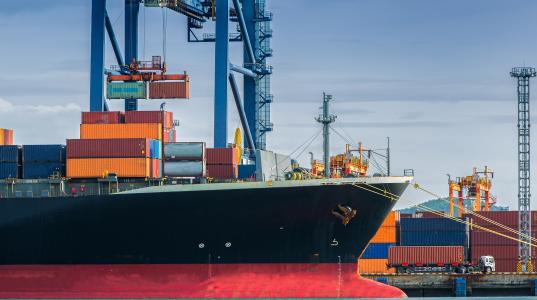
The cargo ships that move goods across our oceans are the heart of world trade—but the greenhouse gas emissions they release are one of the world’s thorniest decarbonisation challenges.
European lawmakers are close to hammering out a new carbon pricing scheme for the EU’s international shipping, but a few contentious points remain in question. Given the international nature of maritime shipping, climate measures come with inherent diplomatic challenges. Despite these challenges, European parliamentarians and Member States should aim for ambitious climate action and resist kicking the can down the road.
The EU’s cap-and-trade scheme for carbon emissions, known as EU ETS, already applies to heavy industry, manufacturing and intra-EU aviation. If the current revision is adopted, it will also put a price on shipping emissions starting in 2023.
This proposed revision to include shipping is far from perfect. Late last year, Environmental Defense Fund Europe commissioned research showing that shipping ETS will only lead to emissions reductions if it triggers wider international action, through the International Maritime Organization (IMO) or the EU’s trading partners. Ocean-going ships like containers and oil tankers often sail across all corners of the globe over a calendar year, making it hard for a region – let alone a country – to effectively regulate their shipping emissions.
This international scope is also why shipping emissions are mostly excluded from country pledges under the Paris Agreement, effectively belonging to a carbon “no man’s land” regulated instead by the IMO.
Europe’s 440 million consumers mean that the trading volumes covered under the EU ETS are important, as well as globally influential. The EU can make the most of this influence by opting for ‘full scope’ coverage, by eschewing a proposed three-year phase-in period, and by committing to applying ETS to other climate-warming pollutants such as methane (CH4), nitrous oxides (N2O) and Black Carbon (BC) as soon as possible.
Geographical scope is probably the trickiest choice to make. A full international scope of carbon pricing would require ships to pay for emissions across any long international journeys that include an EU port. Though geographically distant, these are EU-related emissions without the right price on carbon, and so should come under EU ETS as a first step. Provisions should be in place to scale back the EU ETS once IMO, or its trading partners, introduce equivalent or more ambitious carbon pricing.
The timeline of the EU ETS is also significant. The European Commission proposed a three-year transition for phasing in the measure. This flexibility was not afforded to other sectors, and it is expected to be rightly thrown out by the European Parliament. Shipping emissions are very harmful to the climate and currently increasing every year. For many types of ships, implementing EU ETS from 2023 will offer immediate incentives for technical upgrades and operational efficiencies that could help to at least stabilize emissions.
Finally, EU policy makers should also be mindful that carbon dioxide is only one of several gases ETS should apply to. Shipping is a small but growing source of methane emissions through leakage and slip from gas-powered (LNG) ships. Major shipping companies like France’s CMA CGM are betting on LNG as a marine fuel which makes further uptake likely, even if problematic. It is critical that shipping’s EU Monitoring, Reporting and Verification (MRV) for CO2 is extended to methane and priced appropriately in parallel with the ETS reform and not postponed by Member States.
Shipping offers plenty of decarbonisation opportunities, but the industry’s idiosyncrasies and global nature create barriers to effective regulation. The EU should signal to the IMO and its trading partners that the time has come to overcome them.